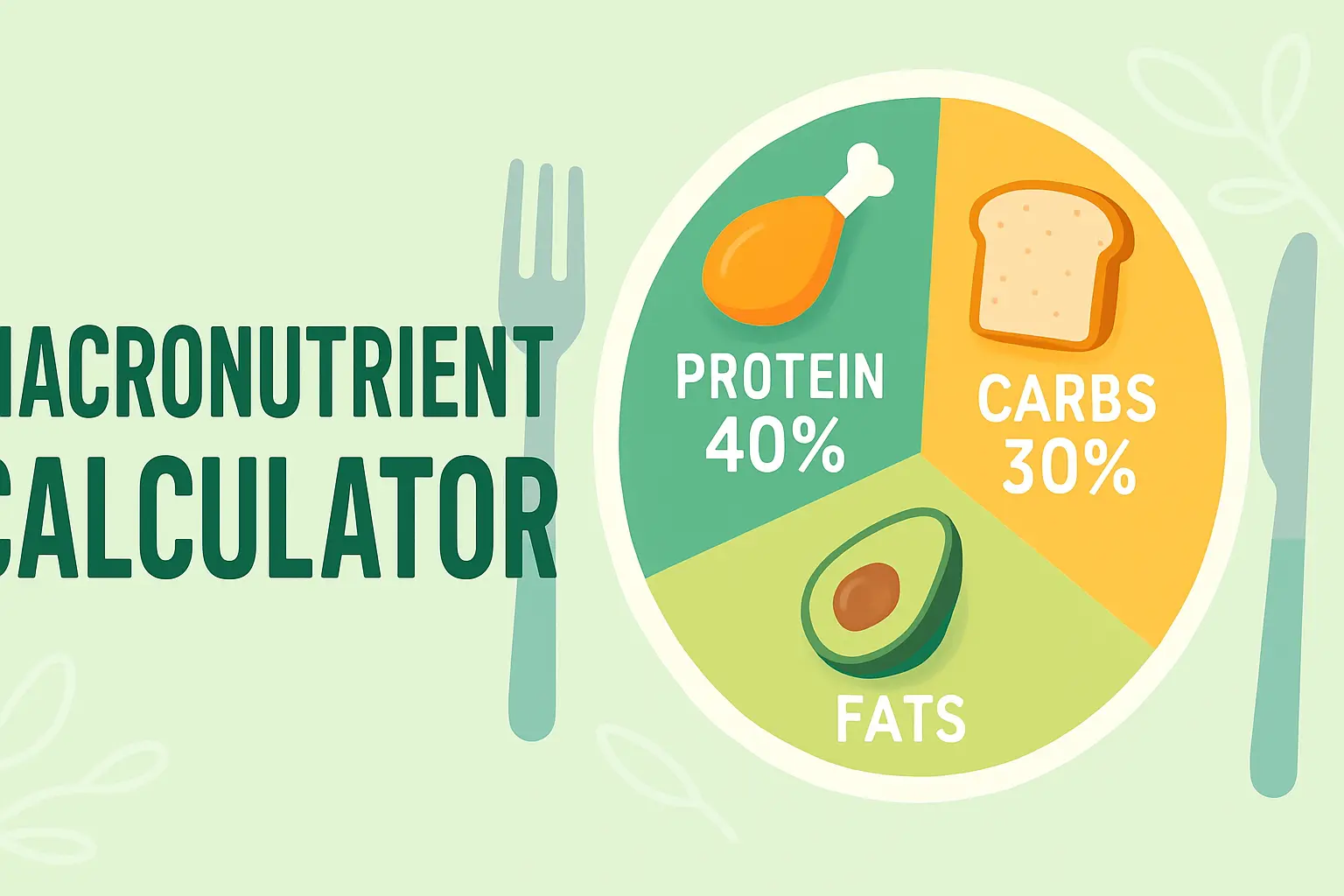Fick Calculator
Professional cardiac output calculator using Fick's equation for accurate cardiovascular assessments. Calculate cardiac output, cardiac index, and stroke volume with precision for clinical decision-making.
Fick Equation Calculator
Enter patient parameters to calculate cardiac output and related hemodynamic values
Normal: 200-300 mL/min for adults
Normal: 18-22 mL/dL
Normal: 12-16 mL/dL
Normal: 60-100 bpm
Normal: 1.5-2.0 m² for adults
BSA Calculator
Hemodynamic Results
Hemodynamic Parameters Visualization
Clinical Interpretation
Complete Guide to Fick Calculator
Understanding the Fick Principle
The Fick principle, developed by German physiologist Adolf Fick in 1870, represents one of the most fundamental concepts in cardiovascular physiology. This principle provides a reliable method for calculating cardiac output by measuring the body's oxygen consumption and the arteriovenous oxygen content difference. The Fick calculator serves as an indispensable tool for healthcare professionals, enabling accurate assessment of cardiac function in clinical settings.
The Fick Equation
CO = Cardiac Output (L/min)
VO₂ = Oxygen Consumption (mL/min)
CvO₂ = Venous Oxygen Content (mL/dL)
Physiological Foundation
The Fick principle is based on the fundamental law of conservation of mass. According to this principle, the total uptake of oxygen by the lungs must equal the amount of oxygen delivered to the tissues by the cardiovascular system. This relationship allows us to calculate cardiac output by measuring oxygen consumption and the difference in oxygen content between arterial and venous blood.
When blood flows through the lungs, it picks up oxygen and releases carbon dioxide. The amount of oxygen consumed by the body reflects the metabolic demands of tissues. By measuring how much oxygen is consumed and how much oxygen is extracted from each unit of blood as it circulates, we can determine how much blood the heart must pump per minute to meet the body's oxygen demands.
Historical Significance
Adolf Fick's groundbreaking work in the 19th century laid the foundation for modern cardiac catheterization and hemodynamic monitoring. His principle was initially theoretical, as the technology to measure mixed venous oxygen content was not available during his lifetime. It wasn't until the development of cardiac catheterization techniques in the mid-20th century that the Fick method became practically applicable in clinical medicine.
Key Concepts to Remember:
- The Fick principle assumes steady-state conditions
- Oxygen consumption must be measured or estimated accurately
- Arterial and mixed venous blood samples are required
- The method is most accurate when oxygen consumption is measured directly
Clinical Applications of the Fick Calculator
The Fick calculator has extensive applications in modern medicine, particularly in critical care, cardiology, and perioperative settings. Healthcare professionals rely on Fick equation calculations to assess cardiac function, guide treatment decisions, and monitor patient response to interventions. Understanding these applications is crucial for optimal patient care and clinical decision-making.
Cardiac Catheterization
In cardiac catheterization laboratories, the Fick method serves as the gold standard for cardiac output measurement. During right heart catheterization, mixed venous blood samples are obtained from the pulmonary artery, while arterial samples are collected from systemic arteries. This direct measurement approach provides the most accurate assessment of cardiac function and is essential for evaluating patients with complex cardiovascular conditions.
The Fick calculator is particularly valuable when assessing patients for heart transplantation, evaluating the severity of heart failure, or determining the hemodynamic significance of valvular disease. In these scenarios, precise cardiac output measurements can influence critical treatment decisions and help predict patient outcomes.
Intensive Care Medicine
Critical care physicians frequently use Fick calculations to monitor cardiac function in mechanically ventilated patients and those with circulatory shock. The ability to calculate cardiac output using readily available blood gas data makes the Fick method particularly useful in intensive care settings where continuous hemodynamic monitoring is essential.
In septic shock, cardiogenic shock, and other critical conditions, the Fick calculator helps clinicians assess the adequacy of cardiac output and tissue oxygen delivery. This information guides fluid resuscitation strategies, vasoactive medication dosing, and decisions regarding mechanical circulatory support.
Anesthesia and Perioperative Care
Anesthesiologists utilize Fick calculations during high-risk surgical procedures to monitor cardiac function and ensure adequate tissue perfusion. The method is particularly valuable during cardiac surgery, where direct measurement of mixed venous oxygen saturation is often available through pulmonary artery catheters.
Primary Applications
- Heart failure assessment
- Valvular disease evaluation
- Transplant candidacy assessment
- Shock state monitoring
- Perioperative hemodynamic monitoring
Special Considerations
- Requires steady-state conditions
- Invasive blood sampling needed
- Accuracy depends on measurement precision
- May be affected by intracardiac shunts
- Requires experienced interpretation
Research and Clinical Trials
The Fick method remains a cornerstone in cardiovascular research and clinical trials. Its accuracy and reproducibility make it an ideal endpoint for studies evaluating new heart failure medications, mechanical circulatory support devices, and surgical interventions. Researchers rely on Fick calculations to assess the efficacy of treatments and understand their impact on cardiac function.
Normal Values and Clinical Interpretation
Understanding normal values and their clinical significance is essential for proper interpretation of Fick calculator results. These reference ranges help healthcare professionals distinguish between normal cardiac function and various pathological states. Proper interpretation requires consideration of patient demographics, clinical context, and measurement conditions.
Normal Reference Ranges
Supporting Parameters
Age and Gender Considerations
Normal values for cardiac output and related parameters vary significantly with age, gender, and body size. Younger individuals typically have higher cardiac outputs due to increased metabolic demands and better cardiac function. As people age, both resting cardiac output and maximum cardiac output capabilities tend to decline due to changes in cardiac structure and function.
Gender differences are primarily related to body size and composition. Women generally have smaller body surface areas and may have slightly lower absolute cardiac outputs, but when indexed to body surface area, the differences become less pronounced. This is why cardiac index (CI) is often more clinically relevant than absolute cardiac output values.
Pathological States and Interpretation
Low cardiac output states (cardiac output < 4.0 L/min or cardiac index < 2.5 L/min/m²) can indicate various pathological conditions including heart failure, cardiogenic shock, severe valvular disease, or pharmacological depression of cardiac function. These patients often present with symptoms of poor tissue perfusion such as fatigue, shortness of breath, and decreased exercise tolerance.
High cardiac output states (cardiac output > 8.0 L/min or cardiac index > 4.0 L/min/m²) may be physiological (exercise, pregnancy, fever) or pathological (hyperthyroidism, sepsis, severe anemia, arteriovenous malformations). The clinical context is crucial for determining whether elevated cardiac output represents an appropriate physiological response or an underlying pathological condition.
Clinical Interpretation Tips:
- Always consider clinical context and patient symptoms
- Use cardiac index for better comparison between patients
- Look for trends over time rather than isolated measurements
- Consider measurement limitations and potential sources of error
- Correlate with other hemodynamic parameters when available
Factors Affecting Normal Values
Multiple factors can influence what constitutes "normal" values for individual patients. Physical fitness level significantly affects cardiac output, with trained athletes often having lower resting heart rates but maintained or increased stroke volumes. Environmental factors such as altitude, temperature, and humidity can also influence oxygen consumption and cardiac output.
Medications can significantly alter cardiac output measurements. Beta-blockers typically reduce heart rate and may decrease cardiac output, while vasodilators and positive inotropic agents can increase cardiac output. Understanding the patient's medication regimen is essential for proper interpretation of Fick calculator results.
Detailed Calculation Methods and Formulas
Mastering the calculation methods used in the Fick equation is essential for healthcare professionals who need to perform accurate cardiac output assessments. This comprehensive guide covers all the formulas, conversion factors, and mathematical principles underlying the Fick calculator, ensuring precise and reliable results in clinical practice.
Primary Fick Equation Calculation
Cardiac Output (CO)
The factor of 10 converts units to L/min
VO₂ in mL/min
CaO₂ in mL/dL
CvO₂ in mL/dL
CO in L/min
(1 L = 1000 mL)
(1 dL = 100 mL)
Derived Hemodynamic Parameters
Cardiac Index (CI)
Units: L/min/m²
Normalizes CO for body size
Stroke Volume (SV)
Units: mL
Volume ejected per heartbeat
Stroke Volume Index (SVI)
Units: mL/m²
Normalized stroke volume
Body Surface Area (BSA)
Oxygen Content Calculations
Accurate calculation of oxygen content is crucial for reliable Fick equation results. Oxygen content depends on both the oxygen saturation of hemoglobin and the amount of dissolved oxygen in plasma. While dissolved oxygen contributes minimally under normal conditions, it becomes more significant in patients receiving high concentrations of supplemental oxygen.
Oxygen Content Formula
Hgb = Hemoglobin (g/dL)
1.36 = Oxygen carrying capacity
SO₂ = Oxygen saturation (decimal)
Estimated Oxygen Consumption
When direct measurement of oxygen consumption is not available, estimation methods can be used. The most commonly used formula is based on body surface area and provides a reasonable approximation for patients in stable condition. However, direct measurement is always preferred when accuracy is critical.
Standard VO₂ Estimation
For patients < 70 years
Units: mL/min
Elderly VO₂ Estimation
For patients ≥ 70 years
Accounts for age-related decline
Step-by-Step Calculation Example
Example Patient Data:
- Age: 45 years
- Height: 175 cm
- Weight: 70 kg
- Heart Rate: 75 bpm
- Hemoglobin: 14 g/dL
- Arterial SO₂: 98%
- Mixed Venous SO₂: 70%
- Arterial PO₂: 95 mmHg
Limitations and Clinical Considerations
While the Fick calculator remains a gold standard for cardiac output measurement, understanding its limitations is crucial for appropriate clinical application. Healthcare professionals must be aware of factors that can affect measurement accuracy and situations where alternative methods may be more suitable. This knowledge ensures optimal patient care and prevents misinterpretation of results.
Methodological Limitations
The Fick method assumes steady-state conditions, meaning that oxygen consumption, cardiac output, and arteriovenous oxygen content difference remain constant during the measurement period. In critically ill patients or those with rapidly changing hemodynamic status, these assumptions may not hold true, potentially affecting the accuracy of calculated values.
Measurement timing is critical for accurate Fick calculations. Arterial and mixed venous blood samples should be drawn simultaneously or within a very short time frame to ensure they represent the same hemodynamic state. Delays between sampling can introduce significant errors, particularly in unstable patients where hemodynamics may be changing rapidly.
Technical Limitations
- Requires invasive blood sampling
- Assumes steady-state conditions
- Sampling timing must be coordinated
- May be inaccurate with intracardiac shunts
- Oxygen consumption estimation can be unreliable
Patient-Related Factors
- Hemodynamic instability
- Severe anemia affecting oxygen transport
- Abnormal hemoglobin variants
- Significant tricuspid regurgitation
- Intracardiac or intrapulmonary shunts
Intracardiac Shunts and Accuracy
The presence of intracardiac shunts significantly complicates Fick calculations and may render results unreliable. In left-to-right shunts (such as atrial septal defects or ventricular septal defects), oxygenated blood mixes with deoxygenated blood, altering the oxygen content measurements and invalidating the basic assumptions of the Fick principle.
When intracardiac shunts are suspected, specialized calculations and additional measurements may be required. The shunt fraction (Qp/Qs ratio) must be calculated separately, and systemic and pulmonary cardiac outputs may need to be determined independently. This complexity requires specialized expertise and may limit the routine application of the Fick method.
Oxygen Consumption Measurement Challenges
Direct measurement of oxygen consumption using metabolic monitoring equipment provides the most accurate results but requires specialized equipment and expertise. Many clinical settings rely on estimated oxygen consumption based on body surface area, which introduces potential errors. These estimation formulas were developed based on healthy populations and may not accurately reflect the metabolic state of critically ill patients.
Factors such as fever, sepsis, mechanical ventilation, sedation, and paralysis can significantly alter oxygen consumption from predicted values. In these situations, direct measurement of oxygen consumption is strongly recommended for accurate Fick calculations, though this may not always be practical or available.
When to Exercise Caution:
- Patients with known or suspected intracardiac shunts
- Severe hemodynamic instability or rapidly changing conditions
- Significant tricuspid regurgitation affecting mixed venous sampling
- Extreme values of cardiac output (very high or very low)
- When only estimated oxygen consumption is available in critically ill patients
Alternative Methods and Validation
In situations where the Fick method may be unreliable, alternative cardiac output measurement techniques should be considered. Thermodilution methods, when properly performed, can provide accurate results and may be more suitable for patients with intracardiac shunts or rapidly changing hemodynamics.
Modern non-invasive methods such as echocardiographic techniques, pulse contour analysis, and bioimpedance methods offer alternatives that may be more appropriate in certain clinical situations. However, each method has its own limitations and assumptions, and the choice of technique should be based on the specific clinical scenario and available expertise.
Quality Assurance and Error Prevention
Implementing quality assurance measures can help minimize errors in Fick calculations. This includes proper calibration of blood gas analyzers, standardized blood sampling techniques, coordinated timing of sample collection, and regular validation of calculation algorithms. Healthcare institutions should establish protocols for Fick measurements and provide adequate training for personnel performing these calculations.
Best Practices for Fick Calculator Usage
Implementing best practices in Fick calculator usage ensures accurate, reliable, and clinically meaningful results. These evidence-based recommendations, derived from decades of clinical experience and research, help healthcare professionals maximize the diagnostic and monitoring capabilities of this essential cardiovascular assessment tool while minimizing potential sources of error.
Pre-Measurement Considerations
Proper patient preparation is essential for accurate Fick calculations. Patients should be in a steady-state condition for at least 10-15 minutes before measurements are taken. This means avoiding recent changes in position, medication administration, fluid boluses, or ventilator settings. The patient's hemodynamic parameters should be stable, with consistent heart rate and blood pressure readings.
Environmental factors should also be controlled. Room temperature should be comfortable, and the patient should be at rest without anxiety or agitation. If the patient is mechanically ventilated, ensure that ventilator settings have been stable for an appropriate period. Document any factors that might affect metabolism or oxygen consumption, such as recent procedures, medication changes, or clinical events.
Patient Preparation
- Ensure steady-state conditions
- Wait 10-15 minutes after interventions
- Minimize patient anxiety
- Control environmental temperature
- Document recent clinical events
Sample Collection
- Simultaneous arterial/venous sampling
- Proper catheter position verification
- Adequate sample volumes
- Immediate analysis when possible
- Proper sample handling and transport
Calculation Accuracy
- Use direct VO₂ measurement when available
- Verify unit conversions
- Double-check mathematical calculations
- Consider measurement limitations
- Validate results against clinical findings
Optimal Sampling Techniques
Mixed venous blood sampling requires careful attention to catheter position and sampling technique. The pulmonary artery catheter tip should be properly positioned in the main pulmonary artery or proximal right or left pulmonary artery. Avoid sampling from peripheral locations where incomplete mixing may occur. Withdraw blood slowly to prevent contamination with pulmonary capillary blood.
Arterial sampling should be obtained from a reliable arterial access point with good waveform quality. Ensure that the sampling line is properly flushed and that there are no air bubbles or clots that could affect sample quality. The timing of arterial and mixed venous sampling should be coordinated to within seconds of each other to ensure they represent the same hemodynamic state.
Quality Control Measures
Implement systematic quality control measures to ensure measurement accuracy. This includes regular calibration of blood gas analyzers according to manufacturer specifications, participation in external quality assurance programs, and maintaining detailed records of calibration and quality control results. Staff should receive appropriate training in blood gas analysis and Fick calculation procedures.
Establish protocols for handling unusual or unexpected results. Values that fall outside expected ranges should be verified through repeat measurements or alternative methods when possible. Maintain detailed documentation of all measurements, including timestamps, clinical conditions, and any factors that might affect interpretation.
Fick Calculator Checklist:
Before Measurement:
- Verify catheter positions
- Ensure steady-state conditions
- Check equipment calibration
- Document clinical status
After Calculation:
- Validate results clinically
- Check for calculation errors
- Compare with previous values
- Document methodology used
Clinical Integration and Decision Making
Fick calculator results should always be interpreted within the broader clinical context. Consider the patient's symptoms, physical examination findings, other diagnostic test results, and overall clinical trajectory. Isolated abnormal values should prompt repeat measurements and consideration of potential sources of error before making significant treatment decisions.
Use trending of values over time rather than relying on single measurements whenever possible. Serial Fick calculations can provide valuable insights into treatment response and disease progression. Establish institutional protocols for frequency of measurements and criteria for repeating calculations when results are unexpected or inconsistent with clinical findings.
Staff Training and Competency
Ensure that all personnel involved in Fick calculations receive appropriate training and demonstrate competency in the procedure. This includes understanding the theoretical basis of the Fick principle, proper sampling techniques, calculation methodology, and result interpretation. Regular competency assessments and continuing education help maintain high standards of care.
Develop institutional guidelines and protocols for Fick calculator usage that are easily accessible to all staff members. These should include step-by-step procedures, troubleshooting guides, and criteria for when to seek additional expertise or alternative methods. Regular review and updating of protocols ensure they remain current with best practices and technological advances.
Excellence in Fick Calculator Usage:
Achieving excellence requires commitment to continuous improvement, regular quality assessments, and staying current with advances in hemodynamic monitoring. The Fick calculator remains a cornerstone of cardiovascular assessment when used properly by trained professionals in appropriate clinical settings.
- Maintain high standards for measurement quality
- Integrate results with comprehensive patient assessment
- Use trending data for clinical decision making
- Provide ongoing staff education and competency verification
- Participate in quality improvement initiatives
Frequently Asked Questions
What is the difference between cardiac output and cardiac index?
Cardiac output is the absolute volume of blood pumped by the heart per minute (L/min), while cardiac index is cardiac output normalized for body surface area (L/min/m²). Cardiac index allows for better comparison between patients of different sizes and is often more clinically relevant than absolute cardiac output values.
How accurate is estimated oxygen consumption compared to direct measurement?
Estimated oxygen consumption using standard formulas (125 × BSA for patients <70 years) provides reasonable approximations for stable patients but can be significantly inaccurate in critically ill patients. Direct measurement using metabolic monitoring is always preferred when accuracy is critical, especially in patients with altered metabolic states.
Can the Fick method be used in patients with intracardiac shunts?
The standard Fick method becomes unreliable in patients with significant intracardiac shunts because the basic assumptions of the equation are violated. Specialized calculations accounting for shunt flow may be required, and alternative methods for cardiac output measurement should be considered in these patients.
How often should Fick calculations be repeated in critically ill patients?
The frequency depends on the patient's clinical stability and the purpose of monitoring. In unstable patients or when assessing response to interventions, measurements may be repeated every few hours. For routine monitoring in stable patients, daily measurements may be sufficient. Always ensure steady-state conditions before repeating measurements.
What factors can affect the accuracy of Fick calculations?
Several factors can affect accuracy including: improper catheter positioning, non-steady-state conditions, timing delays between arterial and venous sampling, inaccurate oxygen consumption estimation, significant tricuspid regurgitation, intracardiac shunts, and technical errors in blood gas analysis or calculations.
What are normal values for stroke volume and stroke volume index?
Normal stroke volume ranges from 60-100 mL per beat, while normal stroke volume index ranges from 35-55 mL/m² per beat. These values can vary with age, fitness level, and underlying cardiac function. Values outside these ranges should be interpreted in conjunction with other clinical findings and hemodynamic parameters.














